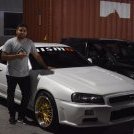R32 Brake Problem After Conversion - Pedal Goes To Floor
Announcements
-
Similar Content
-
Latest Posts
-
I see what you mean on that last paragraph and makes sense. I am leaning towards because I made the repair/filler area large that I didn't use a long enough block. Will minimise the area and let you's know how I go. This is random but I noticed when I put epoxy primer it felt flat but that's just temporary.
-
Tried to repair with filler only. The block is a foam block but quite hard and I put a velcro on it for sandpaper, the hook and loop system. It's not one of those super soft ones that just follow the panel. Similar to a dura block.








Recommended Posts
Create an account or sign in to comment
You need to be a member in order to leave a comment
Create an account
Sign up for a new account in our community. It's easy!
Register a new accountSign in
Already have an account? Sign in here.
Sign In Now